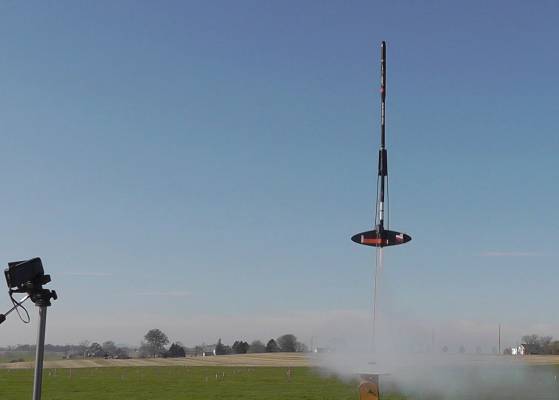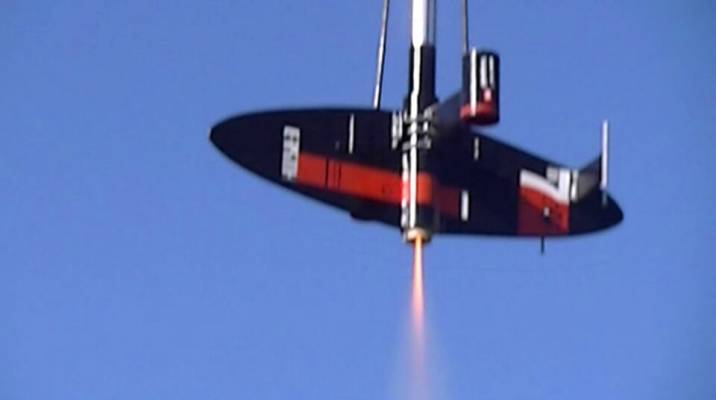The Andromeda: This is the original Estes 1977 kit. It was started in 1977 but not finished until 2011! I have added an Iris altimeter payload bay when I completed it. During initial string stability tests, the rocket buckled and folded in half! To repair, about 2 inches were cut from body tube, so even with the 3 inches of altimeter bay; this rocket is only 1.3 inches longer than the standard model. The two sections are now joined by a coupler; which makes for easier transporting by separating the two halves. To prevent losing the lower half if it ever separates during recovery, I attached a small Kevlar cord between the two halves. It needed about 19grams of nose-weight to pass string-test, but flies straight up under moderate winds. This model got a lot of oohs and ahhs at the launch, as nobody else in the local club has one. To me, gloss black seems to look nicer than the recommended flat black. To that I added a small amount of silver trim, around the engine rings, the rectangles on the engine pods, the antennas, and some rings around the body tube ends. This model takes off fairly slow and majestically. With its large fins, I wouldn't want to fly this in stronger winds, as the weather-cocking could produce a near lawn dart, and its length would almost guarantee a folded body tube and fractured fins. This rocket has flown higher than the US Capitol building in Washington DC, and the Flatiron Building in NY.
| Flight Date: | 2012-11-23 |
| Rocket Name: | Andromeda |
| Kit Name: | Estes - Andromeda {Kit} (1273) [1975-1982] |
| Flyer's Name: | Rich DeAngelis |
| Motors: | C6-3 |
| Expected Altitude: | 255 Feet |
| Wind Speed: | 5.00 mph |
| Launch Site: | Penn Manor School Lancaster PA |
| Actual Altitude: | 264 Feet |
I spent way too much precious time in the morning searching for another lost rocket, but at least I found it. In the meantime, the calm of the early morning was starting to turn breezy, so I had to get this rocket up quickly, as already it was getting borderline. This tall, heavy rocket lifts off slowly and can be turned too easily by the wind with its large fin area.
The fully loaded C6 motor lit and the rocket climbed slowly but beautifully into the sky. The C6 motor started burning and kicked off with an acceleration of 5.9 Gs, then averaged 1.6 Gs for the two second burn. It reached a typical maximum speed of 69 mph, it then coasted for the rest of the long 3.4 second delay burn.
It was turning but still gaining altitude when the ejection then fired at 232 feet, and gained an additional 32 feet while the large orange parachute unfurled. It reached an apogee of 264 feet, and then descended slowly at 8 mph, landing in the grass only about 75 feet from the launch area. Total flight time was 24.2 seconds, and it was a picture-perfect flight.
| Stage | Motor(s) |
|---|---|
| 1 | Estes C6-3 |
 |
 |
 |
 |


John Simmons (May 10, 2023)
Awesome rocket and a very nice flight report. Thanks for posting.